Radeon
Latest

AMD's entry-level Radeon RX 5500 is headed to desktops... and laptops
The Radeon RX 5500 is pulling double duty for AMD: As a desktop card, it'll offer solid 1080p performance for budget gamers. But it'll also show up in laptops as the RX 5500M, a slightly less powerful GPU that'll still deliver decent performance. It was really only a matter of time until AMD gave us something slightly below the RX 5700 and 5700 XT, its latest mid-range desktop GPUS. But it's more surprising to see AMD make a stand in laptops with a standalone GPU, and not just Vega graphics tied to a Ryzen processor like it has for the past few years.
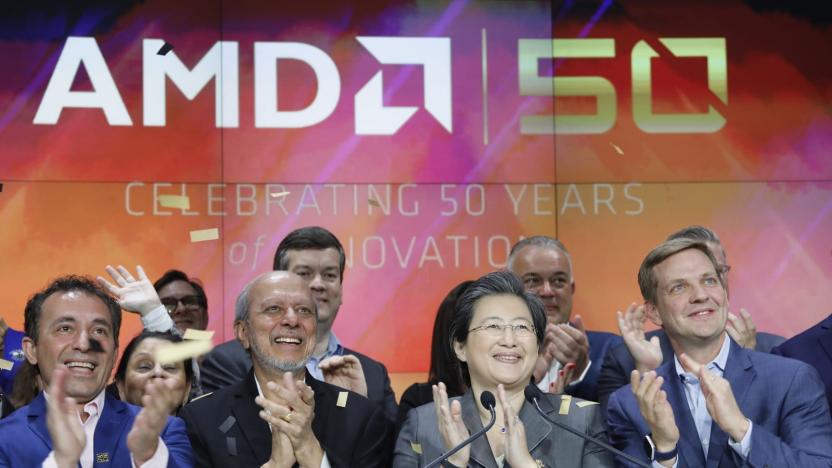
AMD will share its graphics technology with Samsung
AMD stole the spotlight at Computex 2019, where it shared details on its third generation Ryzen CPUs and first Navi GPUs. But that's not the only big news AMD has in store. Today, the company announced a multi-year partnership with Samsung, in which AMD will license its Radeon graphics IP for use in Samsung smartphones and other mobile applications.

Watch AMD's Computex 2019 event in nine minutes!
Computex has kicked off in Taipei today, so probably before you were even awake, AMD revealed its ambitious new CPU and GPU hardware additions. It's going after NVIDIA's middle-weight RTX 2070 graphics with the Radeon RX 5700. Not only will it be the first 7nm consumer video cards out there, the series will also tout PCIe 4.0 and GDDR6 memory support, ensuring the cards won't be irrelevant a year or two down the road. Meanwhile, AMD's third-gen Ryzen 9 CPU is a 12-core beast that's priced to shake up Intel's dominance, striking a strong balance between power efficiency, performance, and sheer bang for your buck. Want specific numbers? We've got them for you.
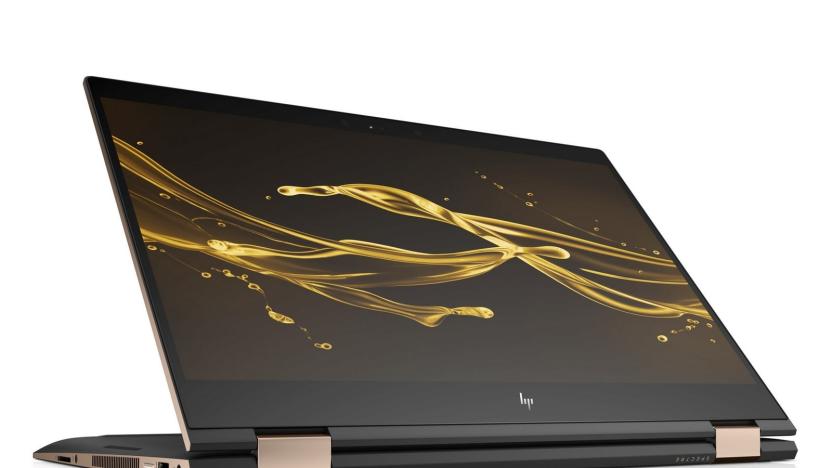
AMD finally delivers drivers that will boost Ryzen Mobile laptops
AMD released its Ryzen Mobile APU in October 2017 with the promise of bargain gaming performance, but since then, driver support has been non-existent. Rather, owners have relied on laptop manufacturers like HP and Dell, instead. AMD promised to fix that at CES 2019, and finally made good with the release of its latest Adrenalin drivers. Users will not only get better stability and support, but also 10 percent faster gaming overall and a 17 percent boost in eSports titles.

AMD is edging closer to breaking NVIDIA's graphic dominance
After AMD released its seven-nanometer Radeon VII graphics card with impressive-looking performance, NVIDIA CEO Jensen Huang responded by essentially trashing it. "The performance is lousy and there's nothing new," he told PC World. "No ray tracing, no AI. It's 7nm with HBM memory that barely keeps up with an [NVIDIA RTX] 2080." NVIDIA's CEO doth protest too much, perhaps, but he's right to be worried. According to a CES performance tease, the Radeon VII actually beat the RTX 2080 in several video-editing and 3D-animation tasks. It also bested the RTX 2080 when playing Strange Brigade and other titles, especially at 4K resolution. While NVIDIA just adopted 12-nanometer tech for the RTX series, AMD has moved on to seven-nanometer designs for the Radeon VII. Rather than criticizing its rival's performance, NVIDIA notably attacked AMD's lack of (NVIDIA-exclusive) features like ray tracing, G-SYNC and AI-powered DLSS anti-aliasing. However, that has yet to prove useful for gamers and doesn't help content creators at all. If ray tracing doesn't pan out and AMD keeps pushing the chip-design envelope, the next couple of years could get rough for NVIDIA.

Watch AMD's CES press event in under 9 minutes
AMD didn't just respond to introductions from Intel and NVIDIA at CES 2019 -- it came out swinging. The chipmaker had plenty to show at its press event, and frequently claimed a performance edge over its rivals. The centerpiece was undoubtedly the Radeon VII, the first 7-nanometer graphics processor aimed at gamers. However, AMD had a little something for everyone, whether it was third-generation Ryzen CPUs for desktops, Epyc chips for heavy-duty number crunching and a talk about the hardware behind Google's Project Stream. That's a lot to digest, but our recap should help catch you up in a hurry.
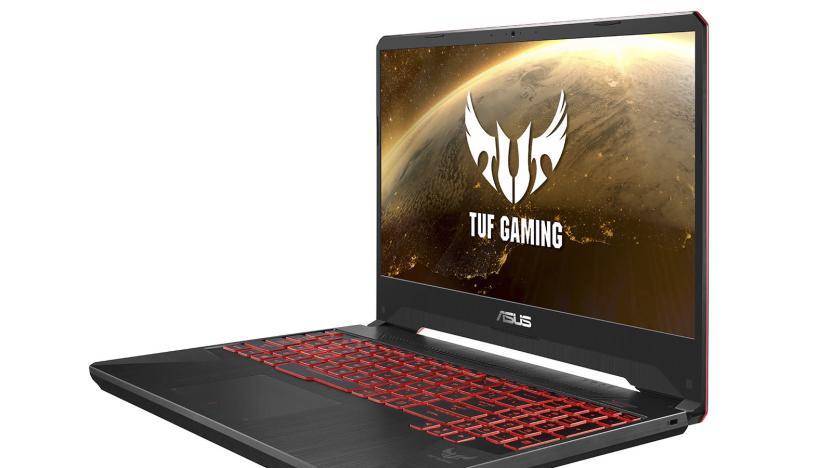
ASUS turns to AMD for its latest TUF gaming laptops
ASUS' latest TUF gaming laptops may look about the same as before, but under the hood, it's a new ball game. Rather than packing Intel and NVIDIA parts, the 15.6-inch FX505DY (above) and 17-inch FX705DY (below) are all AMD, with a 12-nanometer, four-core Ryzen 2 3550H APU and Radeon RX 560X discrete graphics. Both models also have 1080p FreeSync displays, with the 17-inch model hitting up to 60Hz, and the 15-incher maxing out at a decent 120Hz.

Major AMD chip supplier will no longer make next-gen chips
GlobalFoundries, which manufactures AMD's current Ryzen and Radeon chips, has surprisingly announced that it will stop all development work on next-gen 7-nanometer processors. Furthermore, it has no plans to develop future 5- and 3-nanometer technology, either. The company (which spun off from AMD in 2009) said it simply can't afford to spend billions of dollars developing new lines to keep up with its main rivals, Samsung and TSMC. Instead, it will stick to current-generation 12/14-nanometer processes and expand product offerings around that tech.
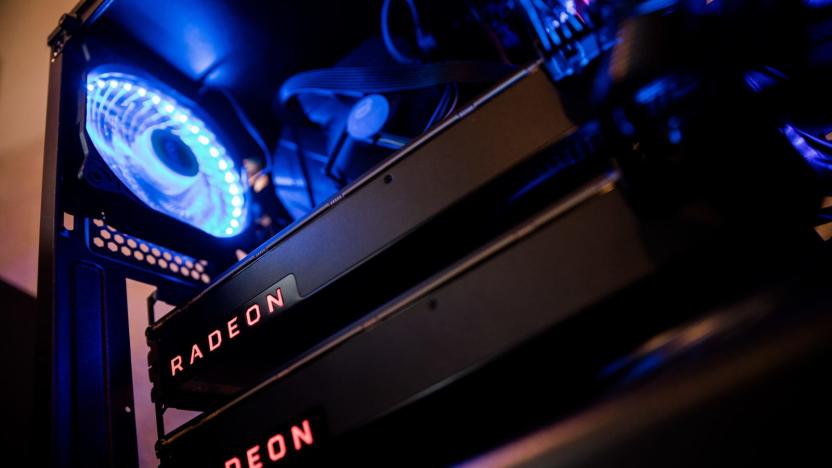
AMD calls out NVIDIA's partner program, G-Sync 'gamer taxes'
A promotional push by NVIDIA has apparently tied up PC builders, and raised the ire of its competitor AMD. The current leader in the graphics card market, NVIDIA has apparently developed a GeForce Partner Program (GPP) that it claims exists to "ensure that gamers have full transparency into the GPU platform and software they're being sold, and can confidently select products that carry the NVIDIA GeForce promise." But according to AMD, that vague explanation hides an attempt to elbow competition out of high-profile system lines. A recent report by HardOCP suggests that for PC builders to be a part of the program (with access to combined marketing efforts, bundles and rebate offers) they have to exclusively align their gaming brand with NVIDIA's GeForce hardware (and not AMD's Radeon). Things came to a head yesterday when ASUS suddenly announced a new gaming line, AREZ, that apparently exists only to keep AMD Radeon-powered PCs out of its well-known ROG gaming equipment. With AMD out of the way, the ROG line can join NVIDIA's GPP.
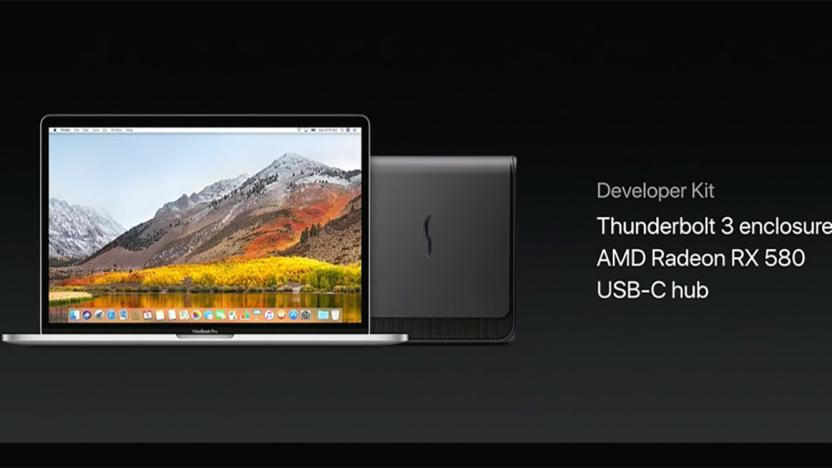
macOS finally supports VR
Until now the only way to run a high-end VR system on a Mac was by booting into Windows, but that didn't solve the fact that Apple had yet to offer a GPU option that was actually good enough for VR. The next best thing was to plug in your desired NVIDIA card via an external enclosure like the Razer Core, but you'd still be stuck with Windows. Thankfully, Apple has finally decided to take matters into its own hands by adding VR graphics support to the upcoming macOS High Sierra due this fall, and it's also offering a Thunderbolt 3 external GPU dev kit as of today at WWDC.

AMD's mid-range Radeon 500-series video cards are here
With last year's Radeon RX 480, AMD wowed us with a $200 video card that could tackle VR and 1,440p gaming. But with its 500-series cards, it's aiming to make an even bigger leap. How does 1,440p gaming beyond 60 frames per second sound? That's what AMD is promising with the RX 580, the most powerful option in this new mid-range lineup. At the same time, the company is also unveiling cheaper cards, the RX 570, 560 and 550, which cater to gamers who might want to save a few more bucks, or want something that could fit into a tiny case.

AMD's Radeon RX 480 is the new king of budget video cards
Instead of trying to build the biggest and most powerful video card on the market, AMD aimed at the low end with the Radeon RX 480. But that doesn't make it any less exciting than NVIDIA's recent powerhouse GeForce GTX 1080 and 1070 GPUs. AMD's pitch for the RX 480 is simple: It's a $200 card that's VR ready. That's huge, especially since the current batch of GPUs that meet minimum VR specs cost around $350. I'll admit I was skeptical when AMD announced the RX 480 at Computex last month. But after putting one through its paces over the past few days, I feel like Han Solo in The Force Awakens. It's true. All of it.
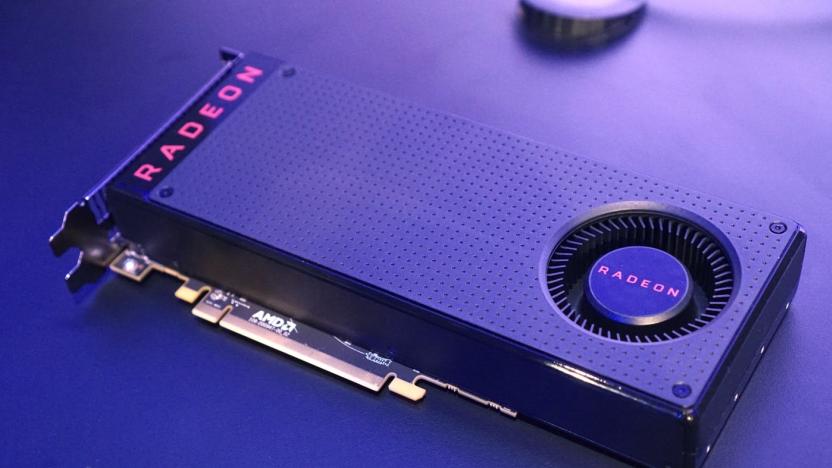
AMD targets esports and HD gaming with new Radeon RX GPUs
After surprising us with the $200 VR-ready Radeon RX 480 at Computex, AMD has rounded out its new GPU lineup at E3. The Radeon RX 470 will offer "power-efficient HD gaming," which means it's targeted at people who just need things to run smoothly at 1080p. And at the low end, there's the Radeon RX 460, which is meant for less demanding esports titles. AMD is basically just teasing the cards at E3, so there aren't any pricing or availability details yet. But given that the RX 480 is starting at $200, I'd imagine they'd come in significantly less.

AMD's most powerful GPU yet is built for VR
AMD has just launched the liquid-cooled Radeon Pro Duo, a graphics card that boasts a lot of superlatives. With 16 teraflops of computing power, it's the fastest single-slot graphics card available, according to the company. At $1,500, it's also the most expensive Radeon card ever and consumes 350 watts (via three eight-pin power connectors), meaning it could add $10 a month to your electric bill if you game all day, every day. Despite the high-end specs, however, AMD is not going after gamers, but VR content creators.

AMD's new graphics core is built for laptop gaming
For all the talk of fast graphics in thin laptops, the technology isn't quite there yet. You typically have to choose between a bulky gaming machine and a thin system with pokey low-end video. AMD thinks it might have the cure, however. It just offered a peek at a new graphics architecture, Polaris, that promises gaming-grade performance without the power draw. In Star Wars Battlefront, one of AMD's future chipsets is 61 percent more energy-efficient than a GeForce GTX 950 with similar performance -- in the mobile world, that could make the difference between a slim portable and a big desktop replacement. Even if AMD is cherry-picking the results, this could still lead to speedier visual in laptops and any other small PCs where heat and power are problems.

AMD spins off Radeon graphics into new division
AMD has formed a new Radeon graphics division and put its highly-regarded CTO, Raja Koduri, in charge. The Radeon Technologies Group will run quasi-independently of AMD with the goal of recapturing market share from NDVIDIA and "staking leadership positions in new markets such as virtual and augmented reality," according to CEO Dr. Lisa Su. Koduri is a key figure in the graphics industry who developed the first DirectX 9 graphics cards. He later helped Apple build its Retina program during a tenure as graphics CTO before returning to AMD in 2013.

AMD's latest video cards include a liquid-cooled beast, the R9 Fury X
Only a few weeks after NVIDIA debuted its latest high-end card, the GTX 980 Ti, AMD is now showing off its latest wares. And if you're looking for a powerful video card, your decision just got a lot more complicated. Leading the pack is AMD's new R9 Fury X, a liquid-cooled powerhouse with the company's new "Fiji" GPU design and highest-bandwidth memory technology. At $649, it's going head-to-head with NVIDIA's 980 Ti. But if you don't need all that power, there's also the Radeon R9 390X ($429), R9 390 ($329), and R9 380 ($199), all of which offer Direct X 12 support (making them ideal for Windows 10) and enough power to let you game in 4K (though we'd imagine that'd be a stretch with the cheaper entry). And if you're just looking something affordable, there's also the R7 370 ($149) and R7 360 ($109), which are more focused on delivering solid 1080p gaming.
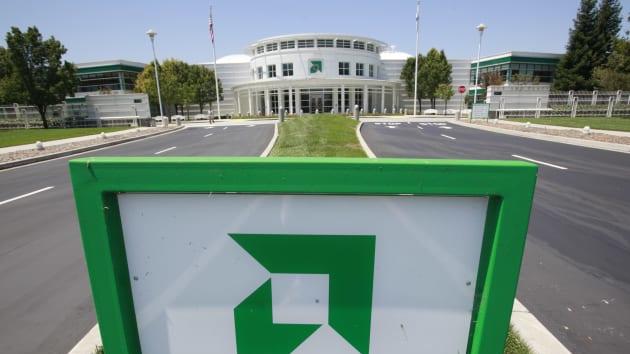
AMD is preparing to enter the SSD business
With all the computing components AMD makes already, it's still hard to believe the company has yet to explore the solid-state drive space. But that's about to change soon -- it looks like AMD's finally ready to get into the business of making SSDs. Not surprisingly, the chip maker is bringing its new SSD line to market under the renowned Radeon R7 brand, perhaps hoping that becomes an incentive for potential customers. These solid-state drives, which AMD says are geared toward PC gamers, will be available in 120GB, 240GB and 480GB flavors, while the advertised read and write speeds appear to be on par with similar offerings from competitors like Samsung. Unfortunately, it's not easy to compare any further, since AMD won't be announcing the price of its Radeon R7 SSDs until they launch "later this year." [Image credit: Associated Press]

CyberpowerPC stuffs full-size graphics into a tiny gaming desktop
Not interested in buying a Steam Machine this year, but still want a tiny gaming PC? Never fear -- CyberPowerPC has just released the Zeus Mini, its latest take on a conventional small computer with full-sized performance. The system is just 4.4 inches thick and 18 inches deep, but it has room for fast video cards like AMD's R9 290 or NVIDIA's GeForce GTX 780. You'll also find a high-end AMD Kaveri or Intel Haswell processor inside, and there's space for a large liquid cooling system if you insist on a silent rig. Zeus Mini prices start at $599 for a basic variant with a 3.7GHz AMD A10 chip and integrated graphics, but demanding players can shell out $1,479 for a flagship model with a 3.5GHz Core i7 and GTX 780 video.

AMD's flagship Radeon R9 290X graphics card now available for $549
AMD's range-topping Radeon R9 290X has been (officially) shrouded in mystery since its unveiling last month, but the company is at last revealing full details and releasing the graphics card to stores. As you'd expect given its $549 price, the flagship is a big leap in performance over the $299 R9 280X: it carries 2,816 stream processors, a wider 512-bit memory bus and a larger 4GB of video RAM. The board can muster 5.6TFLOPs of general computing power, AMD says, and is built with 4K graphics in mind. More importantly, it's also delivering a lot of bang for the buck. Early reviews at sites like AnandTech and Tom's Hardware show the R9 290X outperforming the more expensive GeForce GTX 780; as long as you can tolerate the noisier cooling, it may be a good fit for your gaming PC.







